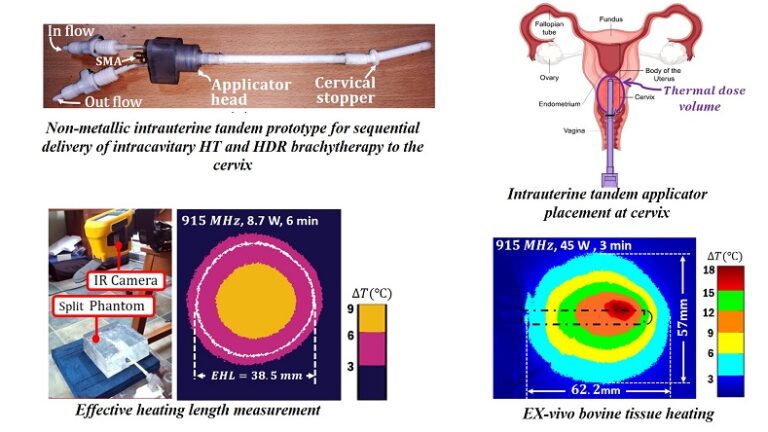Poor disease prognosis reported for locally advanced cervical cancer (LACC) patients necessitates effective and affordable adjuvant therapy that does not induce additional treatment related late effects. Hyperthermia (HT), selective elevation of tumor tissue to 40-45 ℃ using electromagnetic radiative energy has been demonstrated as an effective chemo and radiation sensitizer. HT is delivered as an adjuvant therapy along with external beam radiotherapy and/or chemotherapy using phased array of antennas positioned external to the body. These devices are not affordable for low- and middle-income countries (LMICs) where LACC continues to be a socio-economic burden. In this work, we report a microwave transparent uterine tandem and a flexible intracavitary antenna that can be used for delivering intracavitary HT to the cervix through the tandem. The tandem is also designed to support delivery of catheter based high dose rate (HDR) brachytherapy (BT) to the cervix. Thus, intracavitary HT and HDR BT can be delivered in sequential mode using the same uterine tandem applicator. An electrically short (0.46) low profile (0.1 mm thick) flexible ferrite sheet with superior secondary current suppression characteristics was selected for intracavitary HT treatment of the cervix at 915 MHz using a flexible wire antenna. The intracavitary antenna has excellent power coupling to tissue and localized power deposition at 915 MHz through the non-metallic uterine tandem applicator. The measured effective heating length (EHL), which corresponds to 50% iso-contour of the maximum temperature rise, ∆T_max was 38.5 mm. Simulations and measurements demonstrated that the flexible wire antenna with low-profile ferrite sheet is capable of traversing inside the uterine tandem applicator and delivering localized power deposition in phantom and ex vivo bovine tissue. Administering intracavitary HT as a sequential adjuvant therapy for HDR BT using the same device has the potential to improve local control and prevent recurrence at the primary site. Thus, it is expected to reduce the cancer burden in LMICs where external phased array-based HT treatment is not affordable.

Intracavitary Applicator for Sequential Delivery of Localized Hyperthermia Through Non-Metallic Uterine Tandem
Sign-in or become an IEEE member to discover the full contents of the paper.
